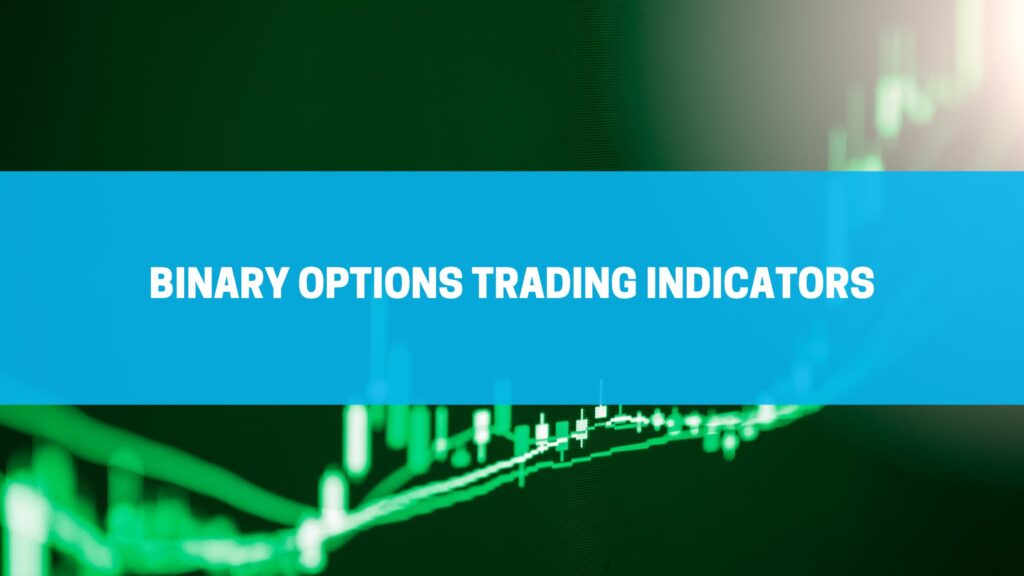A binary options indicator is a tool that traders use to identify potential trading opportunities in the market. They are usually based on technical analysis techniques, such as moving averages, trend lines and momentum indicators.
However, they can also be based on fundamental analysis or a combination of both.
Some popular binary options indicators include the RSI (Relative Strength Index), the MACD (Moving Average Convergence Divergence) and the Bollinger Bands.
However, note that binary options indicators are not a guarantee of future market performance and should be used in conjunction with other forms of analysis.
Now let’s discuss binary options indicators in detail, how they work, and more.
Popular Binary Options Indicators
Binary options traders use several popular indicators to help them make trading decisions and aid their binary options trading strategies.
Here are popular binary options indicators that traders use:
Moving Averages Bollinger Bands Relative Strength Index (RSI) Stochastic Oscillator MACD Wilder’s Directional Movement Index (DMI) Commodity Channel Index (CCI)
Now let’s dive deeper into each of these binary options trading indicators.
1. Moving averages
This indicator calculates the average price of an asset over a specific period of time. It is often used to identify trends and determine whether an investment is overbought or oversold.
2. Bollinger Bands
This indicator uses moving averages and standard deviation to create bands around the price of an asset. The bands contract and expand based on volatility and can be used to identify potential buy or sell signals.
3. Relative Strength Index (RSI)
This indicator compares the extent of recent gains to recent losses in an asset’s price and can be used to identify overbought or oversold conditions.
4. Stochastic oscillator
This indicator compares an asset’s closing price with its price range over a certain period of time and can be used to identify potential buy or sell signals.
5. MACD
The trend-following momentum indicator, Moving Average Convergence Divergence, represents the relationship between two moving averages of an asset’s price.
You can use MACD to identify potential buy or sell signals.
However, note that these indicators are not 100% accurate and must be combined with other technical and fundamental analysis.
In other words, these indicators do not guarantee future performance, as trading binary options always involves risk.
6. Wilder’s Directional Movement Index (DMI)
The technical indicator, Wilder’s Directional Movement Index (DMI), also known as the Average Directional Index (ADX), can recognize the strength of a trend in the market.
ADX consists of three lines: the ADX line, the positive direction indicator (+DI) and the negative direction indicator (-DI).
The ADX line measures the trend’s strength, with values above 25 indicating a strong direction and below 20 indicating a weak move.
The +DI and -DI lines are used to determine the direction of the trend, with +DI indicating an uptrend and -DI indicating a downtrend.
The DMI can determine whether a market is trending or fluctuating and helps traders identify potential entry and exit points.
However, like other indicators, it should be used in conjunction with other forms of analysis and not as a stand-alone indicator.
7. Commodity Channel Index (CCI)
The popular technical indicator, Commodity Channel Index (CCI), was created by Donald Lambert. You can use this indicator to identify cyclical turns in a market.
It compares the current price level with an average price level over a given period of time. CCI is typically used to identify overbought and oversold conditions in a market. It can also identify potential trend changes.
The CCI calculates the difference between the current and average prices, and then normalizes the result by dividing it by the average deviation.
The resulting value is then plotted as a line on a graph.
Values above +100 are considered overbought, and values below -100 are considered oversold. Traders usually use a crossing of the +100 or -100 level to generate buy or sell signals.
It is important to note that, like other indicators, CCI should not be used in isolation.
Traders should use this with other forms of analysis and market context to make their trading decisions.
In addition, CCI is typically used in the analysis of commodity and futures markets, but can also be applied to other markets, such as stocks or currency markets.
5 Tips for Using Technical Binary Options Indicators
The following tips can help you maximize the benefits you get from using indicators:
1. Use multiple indicators
Using multiple indicators can help you better understand market conditions and confirm signals.
2. Use indicators that complement each other
Using indicators that measure different aspects of the market can help you gain a better understanding of market conditions.
For example, a trend indicator like the ADX and an oscillator like the RSI can help you determine the trend and the potential overbought or oversold conditions.
3. Choose the right time frame
Different indicators are suitable for different time frames.
For example, an indicator that is well-suited for a 5-minute chart may not be as useful on a daily chart. Make sure to select appropriate indicators for the time frame.
4. Be aware of market conditions
Binary options trading is very dependent on market conditions.
It is important to be aware of economic events, news and other market moving factors that affect your trading asset.
5. Understand the expiration date
Binary options have a fixed expiration date. So, choosing appropriate indicators for your trade’s expiration time is important.
Short-term indicators such as the RSI may be more suitable for 60-second options, while longer-term indicators such as the ADX may be more suitable for end-of-day options.
What is a binary indicator?
A binary indicator is a variable in computer science and statistics that can take one of two possible values, often represented as 0 or 1.
These values can indicate the presence or absence of a certain feature or tell whether a certain condition is true or false.
In many cases, binary indicators are used as inputs for machine learning models.
For example, in a model that predicts email spam, a binary indicator can tell whether the email has a certain word or phrase. The indicator’s value will be 1 if the word or phrase is present in the email and 0 if it is not.
Binary indicators can also create a categorical variable from a continuous variable.
For example, suppose a data set contains the ages of individuals. A binary indicator can indicate whether someone is above or below a certain age threshold, such as 18 or 65.
Binary indicators can also be used as dependent variables in a model.
For example, in a model that predicts whether an individual will default on a loan, the binary indicator will be 1 if the individual defaults and 0 if they do not.
In general, binary indicators are simple and easy to use.
However, they may be less informative than other variables, such as continuous or categorical variables with more than two levels.
Closure
The effectiveness of technical indicators can vary depending on the specific option and the market conditions.
Some indicators, such as trend indicators such as the ADX, can be very effective in identifying the direction and strength of a trend, while others, such as the RSI, can help identify overbought and oversold conditions.
Remember that no technical indicator is perfect and can provide false signals, especially in volatile markets. Also, indicators are based on previous price actions.
They can only provide an estimate of future price movements, so they must be used in conjunction with other forms of analysis and market context to trade binary options.
Additionally, using indicators alone may not be enough to be profitable in binary options trading.
Traders need a complete understanding of the markets and use a solid trading strategy that includes money management, risk management and proper performance of the underlying asset they are trading.
In summary, binary options indicators can be useful tools for traders.
However, you should not use these indicators as standalone tools. They provide the best results in conjunction with other forms of analysis and market context.
Disclaimer for Uncirculars, with a Touch of Personality:
While we love diving into the exciting world of crypto here at Uncirculars, remember that this post, and all our content, is purely for your information and exploration. Think of it as your crypto compass, pointing you in the right direction to do your own research and make informed decisions.
No legal, tax, investment, or financial advice should be inferred from these pixels. We’re not fortune tellers or stockbrokers, just passionate crypto enthusiasts sharing our knowledge.
And just like that rollercoaster ride in your favorite DeFi protocol, past performance isn’t a guarantee of future thrills. The value of crypto assets can be as unpredictable as a moon landing, so buckle up and do your due diligence before taking the plunge.
Ultimately, any crypto adventure you embark on is yours alone. We’re just happy to be your crypto companion, cheering you on from the sidelines (and maybe sharing some snacks along the way). So research, explore, and remember, with a little knowledge and a lot of curiosity, you can navigate the crypto cosmos like a pro!
UnCirculars – Cutting through the noise, delivering unbiased crypto news















